CLASS A OVENS TO MEET NFPA 86 REQUIREMENTS
The National Fire Protection Association (NFPA) requires specially designed "Class A" ovens for direct, gas-fired equipment, or for processing products involving flammable solvents, volatiles or combustible materials. A Class A oven must have a forced exhaust, a method to prove airflow, a purge timer and an explosion relief area. Despatch Class A ovens are specifically designed to meet NFPA 86 requirements. A Despatch Class A oven comes complete with a pressure relief panel, purge timer, and exhaust fan.
LFC Class A Benchtop Ovens
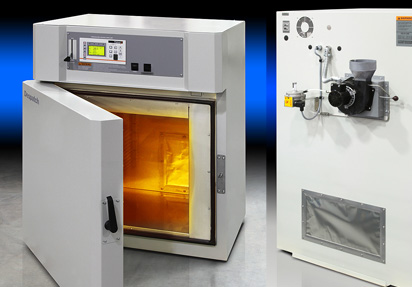
The LFC Class A bench-top oven is specially designed to meet NFPA 86 requirements for applications that include flammable solvents or large amounts of moisture removal. They include a pressure relief panel, purge timer and exhaust fan.
VIEW MOREREQUEST QUOTE
Large Capacity Walk-In Ovens
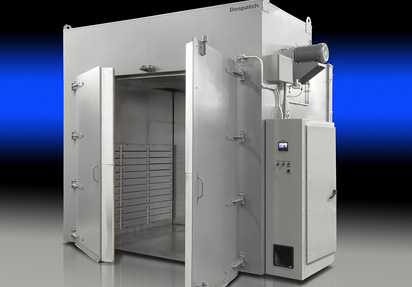
Despatch TFD Class A ovens are specifically designed to meet NFPA 86 requirements. The 476 and 952 cubic foot capacity TFD walk-in oven features uniflow airflow to ensure uniform temperatures throughout the oven. This air moves horizontally and vertically through the work chamber. Maximum temperature is 343℃ (650℉). These ovens ship in just 6 weeks.
VIEW MOREREQUEST QUOTE
PC Series Class A Conveyor Oven
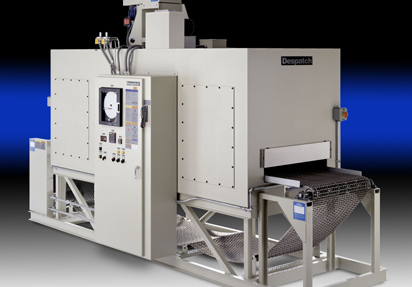
The Despatch PC Series Conveyor Ovens are designed for process versatility and reliability. A Class A option is available to meet NFPA 86 requirements. These conveyor ovens achieve superior temperature uniformity in all interior parts due to high-volume, vertical down airflow. The continuous belt design is ideal for large quantities of similar work pieces being processed.
VIEW MOREREQUEST QUOTE
TFD Class A Walk In Ovens
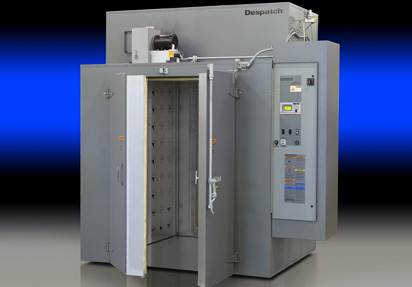
The TFD Class A Walk-In Oven is specifically designed to meet NFPA 86 requirements. The large size and maximum 343℃ (650℉) temperature of the TFD walk-in ovens make these models a perfect choice for curing and drying large-size or large batch components. The interior is aluminized steel and features a plate floor with truck tracks for easy accessibility into the chamber.
VIEW MOREREQUEST QUOTE
RFD Class A Cabinet Oven
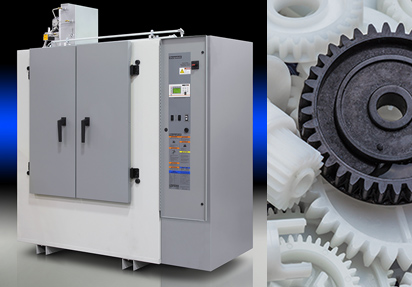
The RFD reach-in oven offers a variety of chamber sizes, features high airflow for fast heating, and is available as a Class A oven for processes involving volatiles. These ovens are commonly used for pre-heating steel, metal stress-relieving and other heavy industrial heat treating processes.
VIEW MOREREQUEST QUOTE
RFF Class A Cabinet Furnace
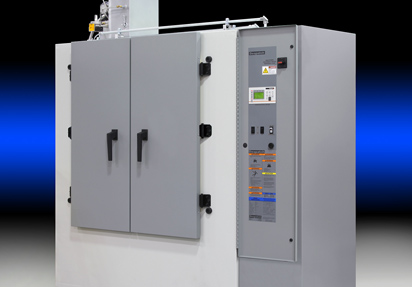
The RFF Class A furnace is specifically designed to meet NFPA 86 requirements. It features horizontal recirculating airflow to ensure exceptional temperature uniformity of +/- 5.6℃ at 538℃. These high performance furnaces deliver temperatures up to 538℃ (1000℉) and are great for such processes as annealing, aging, stress relieving and other process critical applications.
VIEW MOREREQUEST QUOTE
TFF Class A Walk In Furnace
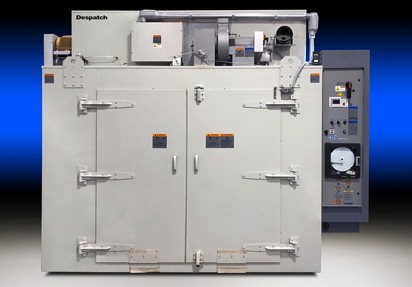
The TFF walk-in and truck-in furnaces are robust for heavier industrial processes at higher temperatures. The TFF models are Class A and meet NFPA 86 requirements for applications such as finish baking, bonding and those involving moisture or fume removal. Horizontal, recirculating air flow creates precise, consistent temperature uniformity throughout the furnace.
VIEW MOREREQUEST QUOTE
RFF Class A Benchtop Furnace

The RFF Class A furnace is specifically designed to meet NFPA 86 requirements. It features horizontal recirculating airflow to ensure exceptional temperature uniformity of +/- 5.6℃ at 538℃. These high performance furnaces deliver temperatures up to 538℃ (1000℉). With its small footprint, the benchtop model is ideal for high temperature process development in a laboratory.
VIEW MOREREQUEST QUOTE
Do You Need A Class A Oven?
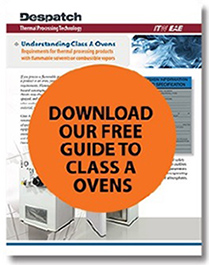 If you process a flammable product or remove combustible vapors from a product in an industrial oven, you will need a Class A oven that meets NFPA 86 requirements. Flammable volatiles that pose a potential explosion or fire hazard can originate from paints, powders, inks, and adhesives. Potential threats may also originate from finishing processes, such as dipped, coated, sprayed, and impregnated materials as well as from polymerization or other molecular rearrangements. Combustible materials include substrate material, wood, paper, plastic pallets, spacers and packaging materials.
If you process a flammable product or remove combustible vapors from a product in an industrial oven, you will need a Class A oven that meets NFPA 86 requirements. Flammable volatiles that pose a potential explosion or fire hazard can originate from paints, powders, inks, and adhesives. Potential threats may also originate from finishing processes, such as dipped, coated, sprayed, and impregnated materials as well as from polymerization or other molecular rearrangements. Combustible materials include substrate material, wood, paper, plastic pallets, spacers and packaging materials.
Inadequate training of operators, lack of proper maintenance, and improper application of equipment can cause serious injury. For the latest safeguards required to minimize explosion hazards, get a copy of NFPA 86 Standard for Ovens and Furnaces, 2019 Edition, from the National Fire Protection Association (www.nfpa.org).
Better safe than sorry
If you have multiple ovens and any one of them is used for processing combustible products, it is recommended that all be Class A. This will prevent someone accidentally using the wrong oven which could result in a catastrophic incident.
Many of the NFPA guidelines and specifications are temperature dependent due to the rate of evolution so it is important that a Class A rated oven never be loaded hot.
Despatch incorporates all pertinent NFPA required safety testing, visual inspection and required documentation in all Preventative Maintenance and Calibration Service Agreements.
NFPA 86 has requirements for annual inspection, operational testing, documentation of testing, and visual inspection of certain oven components such as:
- Safety interlocks
- Set point of temperature, pressure, and flow devices used as safety interlocks.
- Pressure and explosion relief panels.
- Gas heater components.
- Contact your Kemp Instruments Sales Representative for more information.
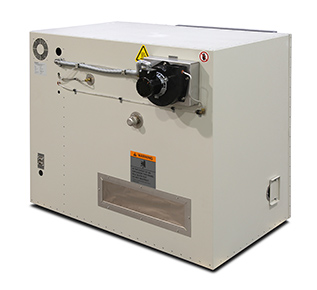 Despatch recommends the use of an airflow switch with the forced exhaust to prove airflow.The forced exhaust is sized to keep the flammable solvent vapor concentrations below the lower explosive limit (LEL) in the oven chamber. The purge timer operates in conjunction with the forced exhaust to purge the oven of volatiles before the heaters are allowed to energize.The purge time is based upon the volume of the oven, as the oven air must be changed four times before the heater may be energized. The airflow switch is used to prove exhaust airflow. With no airflow, the heating system shuts down via the airflow switch. The explosion relief area is typically incorporated into the oven by means of an explosion relief panel/door or explosion relief membrane.
Despatch recommends the use of an airflow switch with the forced exhaust to prove airflow.The forced exhaust is sized to keep the flammable solvent vapor concentrations below the lower explosive limit (LEL) in the oven chamber. The purge timer operates in conjunction with the forced exhaust to purge the oven of volatiles before the heaters are allowed to energize.The purge time is based upon the volume of the oven, as the oven air must be changed four times before the heater may be energized. The airflow switch is used to prove exhaust airflow. With no airflow, the heating system shuts down via the airflow switch. The explosion relief area is typically incorporated into the oven by means of an explosion relief panel/door or explosion relief membrane.
Like all Despatch Class A ovens, the RFD1-42 Class A Benchtop oven features a pressure relief panel, purge timer and exhaust fan.






















